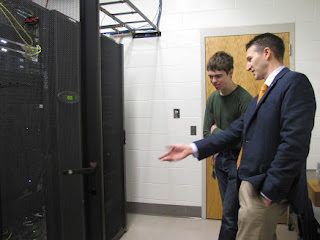Inside L-S: Content filtering at L-S "very liberal" compared to other school districts
To extrapolate a great quote: with great technological power comes great technological responsibility. To that end, many schools have restrictive content filtering policies that limit what students are able to view on the internet. L-S, however, takes a different approach.
“We trust students,” declares Griscom quite matter-of-factly.
Over the past several years, the District’s philosophy on content filtering has changed, and ultimately, Griscom says that L-S has come out very “liberal” on the spectrum of school content filtering. There are three reasons the District may block something:
“We trust students,” declares Griscom quite matter-of-factly.
Over the past several years, the District’s philosophy on content filtering has changed, and ultimately, Griscom says that L-S has come out very “liberal” on the spectrum of school content filtering. There are three reasons the District may block something:
- To protect students from something inappropriate
- To protect the District from liability or harm (e.g., directions for how to hack something)
- To receive federal reimbursement from the Children’s Internet Protection Act (CIPA)
Essentially, the federal government enacted CIPA in 2000 to try to limit minors’ access to obscene content on the internet. When schools filter content at a certain level, they receive some reimbursement in accordance with their economic status from the federal government for technological initiatives; for example, the District’s revamp of its wireless connectivity this summer was aided by federal money.
 |
| The hardware from Lightspeed that maintains the District's filtering mechanism is stored in the NOC, of which LSNews.org received an exclusive tour Photo by Megan Doolittle, LSNews.org Staff Photographer |
From a technical standpoint, the District employs Lightspeed to handle its content filtering. Lightspeed maintains a database of websites, and divides them into categories. The District chooses which categories to block. When a teacher feels a website that is blocked has a valid use, he or she can submit a request to the technology department, which Griscom says is almost always granted.
One major shift in this policy is that YouTube is now completely available district-wide, which Griscom says was a joint decision of the administration team, which considered the pros and cons, and determined that the oasis of educational possibilities outweighed the potential for abuse and viewing of inappropriate content. Again, Griscom emphasized the trust this places on students.
Editor's Note: This is the fourth installment of our "Inside L-S: Technology in the Classroom" series. See the remainder of the series on our Inside L-S page.
--Benjamin Pontz, LSNews.org Editor-In-Chief


